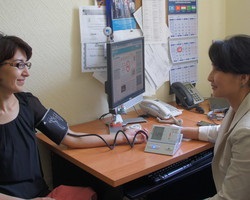As the popularity of freezing food for later use continues to rise, questions arise about its impact on the nutritional content of various food items. While storing leftovers in the fridge can enhance certain nutritional aspects, the freeze-and-reheat process has become a common practice for convenience. However, understanding the nuances of freezing and its influence on nutrition is essential for making informed dietary choices.
The United States Department of Agriculture (USDA) asserts that, in general, there is minimal change in the nutritional value of food during freezer storage. Yet, the impact of freezing on nutritional makeup depends on the specific food item, whether it’s blanched or cooked before freezing, and the subsequent thawing and reheating methods.
Registered dietitians Kristin Kirkpatrick and Kelsey Costa highlight that the formation of frozen crystals during the freezing process can lead to the breakdown of cell walls, resulting in a slight loss of water-soluble nutrients like vitamins C and B. However, these losses are typically minor, and further research is needed to comprehensively understand the impact of freezing on food nutrition.
When done correctly, freezing can actually preserve the nutritional makeup of foods, especially when compared to other preservation methods. Flash freezing fruits and vegetables at peak ripeness helps seal in nutrients, providing a potential advantage over fresh produce that may lose nutrients during transportation.
The nutritional benefits of frozen foods depend on factors such as the presence of additives and how closely the food resembles its natural state. While home-cooked meals generally maintain higher nutritional quality, commercially frozen foods can be comparable if they contain high-quality ingredients without excessive additives.
To optimize nutrient retention when reheating frozen foods, methods such as steaming, microwaving, stir-frying, or air frying are recommended. Steaming is preferred over boiling to reduce the leaching of water-soluble vitamins into cooking water. Research suggests that shorter microwave defrosting times have a less adverse effect on nutrient retention compared to prolonged boiling.
Safety tips for freezing food include blanching vegetables before freezing, storing frozen foods at zero degrees Fahrenheit, and using all frozen items within suggested storage times for the highest nutritional quality. Following USDA guidelines, including overwrapping original packaging and rapid freezing, helps maintain food quality by preventing the formation of large ice crystals.
Frozen fruits and vegetables are best consumed within 8-to-12 months for optimal quality, but even longer storage poses no food safety issues. It’s crucial to adhere to the USDA’s guidelines to ensure both the nutritional quality and safety of frozen foods.
When defrosting frozen food, methods such as the refrigerator, microwave, or as part of the cooking process are recommended. Thawing on the countertop or in warm water is discouraged to prevent rapid microbial growth.
In conclusion, while freezing is a convenient method for preserving food, understanding its impact on nutrition and safety allows consumers to make informed choices about their dietary preferences and habits.











